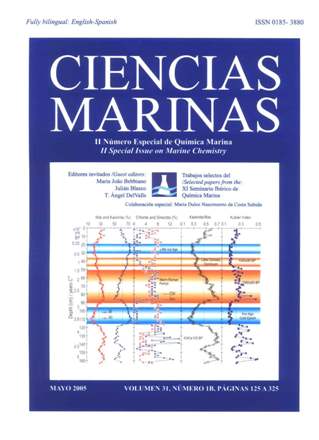A mussel watch in the Ria Formosa lagoon
Main Article Content
Abstract
The present work analyzes the concentrations of various metals (Ag, Cd, Cr, Cu, Ni, Pb and Zn) in the edible part of the mussel Mytilus galloprovincialis from the Ria Formosa lagoon (Portugal). Mussels of a similar size (5–7 cm) were collected. The results indicate that the dispersion and accumulation of metals in mussels is influenced essentially by the sources of pollution and the bioavailability of the metal. The highest concentrations of Ag, Cu and Ni occurred in the mussels from sites 1, 6 and 7, which are mainly related to inputs from urban discharges. The highest concentrations of Cr were found in the mussels from sites 2 and 5, located near urban discharges and metallic structures. The highest concentrations of Pb were recorded in the mussels from site 9, associated with fuel from boats and diffuse inputs of this metal. The mussels at sites 3, 4 and 9 presented the highest concentrations of Zn and Cd, probably caused by physical and chemical processes that occur in the boundary between the lagoon and the ocean. The concentrations of Ag and Ni in the mussels of Ria Formosa are relatively low when compared to other geographical locations. The concentrations of Cd, Cr, Cu and Pb accumulated in the mussels reveal low contamination. As for the concentration of Zn, the values in the Ria Formosa mussels are higher in the eastern part of the lagoon than in the western part, revealing signs of contamination by this metal.
Downloads
Article Details
This is an open access article distributed under a Creative Commons Attribution 4.0 License, which allows you to share and adapt the work, as long as you give appropriate credit to the original author(s) and the source, provide a link to the Creative Commons license, and indicate if changes were made. Figures, tables and other elements in the article are included in the article’s CC BY 4.0 license, unless otherwise indicated. The journal title is protected by copyrights and not subject to this license. Full license deed can be viewed here.

